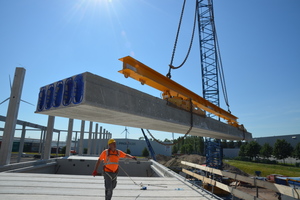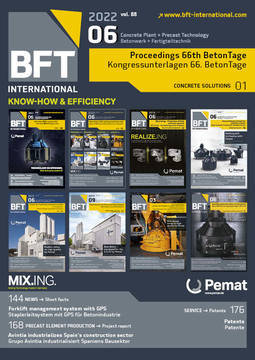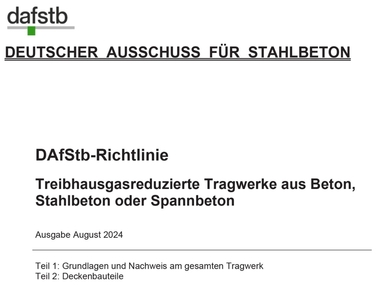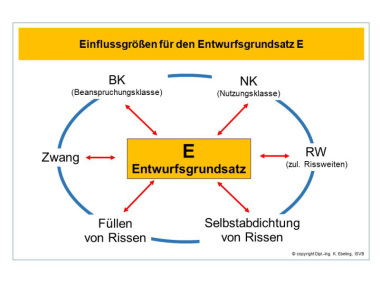Guidelines and standards for carbon-neutral concrete construction – The DAfStb roadmap and a case study
In 2021, discussions took place on various levels within the German Committee for Structural Concrete (DAfStb) on how to transform the challenges posed by the German Act on Climate Protection and the Green Deal proposed by the European Commission into specific tasks and actions. All future activities will start from the ambitious underlying resolution adopted by the DAfStb board, which stipulates the following:
“It is the aim of the DAfStb to achieve climate neutrality of concrete construction by 2045.”
The board first adopted the “DAfStb Roadmap on Building Sustainably with Concrete” to support the transformation towards a climate-friendly and resource-efficient construction method by engaging in research activities and standardization projects along the value chain. This roadmap comprises short-, medium- and longer-term projects to implement the sustainable development goals (by research, guidelines, and standards). Medium-term projects include, for example, the guideline initiatives regarding the new concept of exposure resistance classes stipulated in the forthcoming EC 2 edition, which will make it possible to use low-carbon concretes for a wider range of applications, and standards governing the use of carbon-reinforced concrete in new construction and structural upkeep and maintenance.
The DAfStb Guideline on “Concrete Floors and Roofs made of Precast Hollow-Core Slabs” will be published shortly. Such slabs are suitable for constructing wide-span, material-saving ceilings with common (or reduced) thicknesses, which can contribute to a more adaptive and flexible use of the floor space.
One of the roadmap milestones already achieved is the publication of the “Sustainable building with concrete ” practical guidance for conventional building construction projects. This document puts clients, architects, building physicists, structural designers, building services engineers and construction contractors in a position to implement measures towards reaching the sustainable development goals along the value chain merely based on currently applicable guidelines and standards pertaining to concrete construction.









